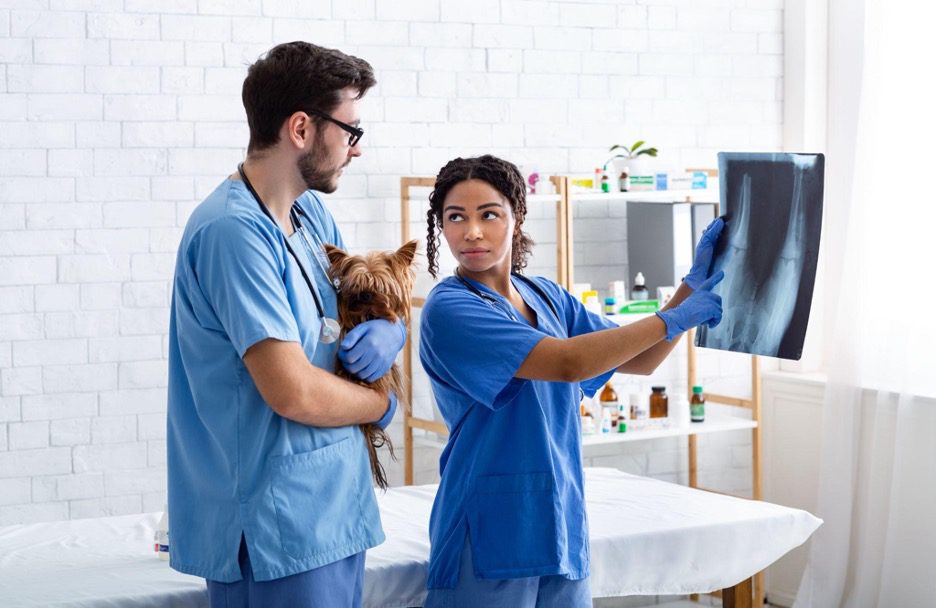
X-rays for veterinarians are among the oldest, yet most frequently used diagnostic tools for medical imaging. Dating back to its invention in the late 1800s and as early as 1939, it was recognized as a revolutionary tool for animal use.
The X-ray machine has become an essential piece of veterinarian equipment due to its continual advancement as a diagnostic tool. It is often one of the first things to be used in many clinics. The turn toward digital imaging has made it even easier for a clinic of any size to have an image read by a certified radiologist within minutes.
How X-Rays Improve Veterinary Outcome
An X-ray by a veterinarian improves patient outcomes because of the ability to diagnose an animal quickly. In the past, veterinarians palpated the animal, drew blood, or obtained urine samples to determine if something was wrong with the animal. While veterinarians can still use these procedures today, time can be saved; a quick, painless X-ray can diagnose the problem accurately.
Earlier, veterinarians used the X-ray primarily to determine a broken bone. Even today, broken bones continue to be the leading use of X-rays; but the improved imaging of the modern X-ray gives the veterinarian an accurate image of how badly a bone is broken. It also helps the veterinarian surgically set the bone and monitor it throughout healing.
Today, this piece of veterinary equipment is used for multiple other diagnoses. It is one of the primary ways of diagnosing cancer, abdominal obstructions, and foreign objects within the animal. A veterinarian can check for other illnesses like lung or heart disease, arthritis, and muscle problems. A quick X-ray will also allow the veterinarian to visualize tumors or other skeletal issues.
Veterinarians even use this tool in routine dental exams. A quick X-ray will show the doctor any problem with the teeth, just as a dentist does for you. Using well-checks can help the doctor keep the loved pet healthy. A senior pet will often have recommended X-rays to keep the doctor alert to impending changes, improving the older animal’s quality of life. The possibilities for the use of this tool are endless.
How Does an X-ray Work to Diagnose an Animal?
An X-ray is a machine that sends a beam of electromagnetic waves absorbed by the material it is going through. This forms a two-dimensional image on the X-ray film. It is like a photo in varying black, gray, and white shades, depending on the object’s density. A bone absorbs more of the electromagnetic wave than air. So, the bone will appear white on the image. At the same time, air will appear as black with grays in other areas. If the animal has swallowed a foreign object such as a rock or a toy, the foreign object absorbs differently, outlining the item. The same as fluid around the heart, fluid accumulation within the lungs (pneumonia or pulmonary edema), a blockage within the intestines, or another organ, the gray tones will be different as the waves are absorbed. This can give the veterinarian a quick diagnosis of the animal’s underlying problem.
There are many benefits to the use of X-rays for veterinarian facilities. A skilled veterinarian can keep on top of animal care with this simple and inexpensive piece of veterinary equipment, the X-ray. They produce improved outcomes for both the pets and the families they are serving.
